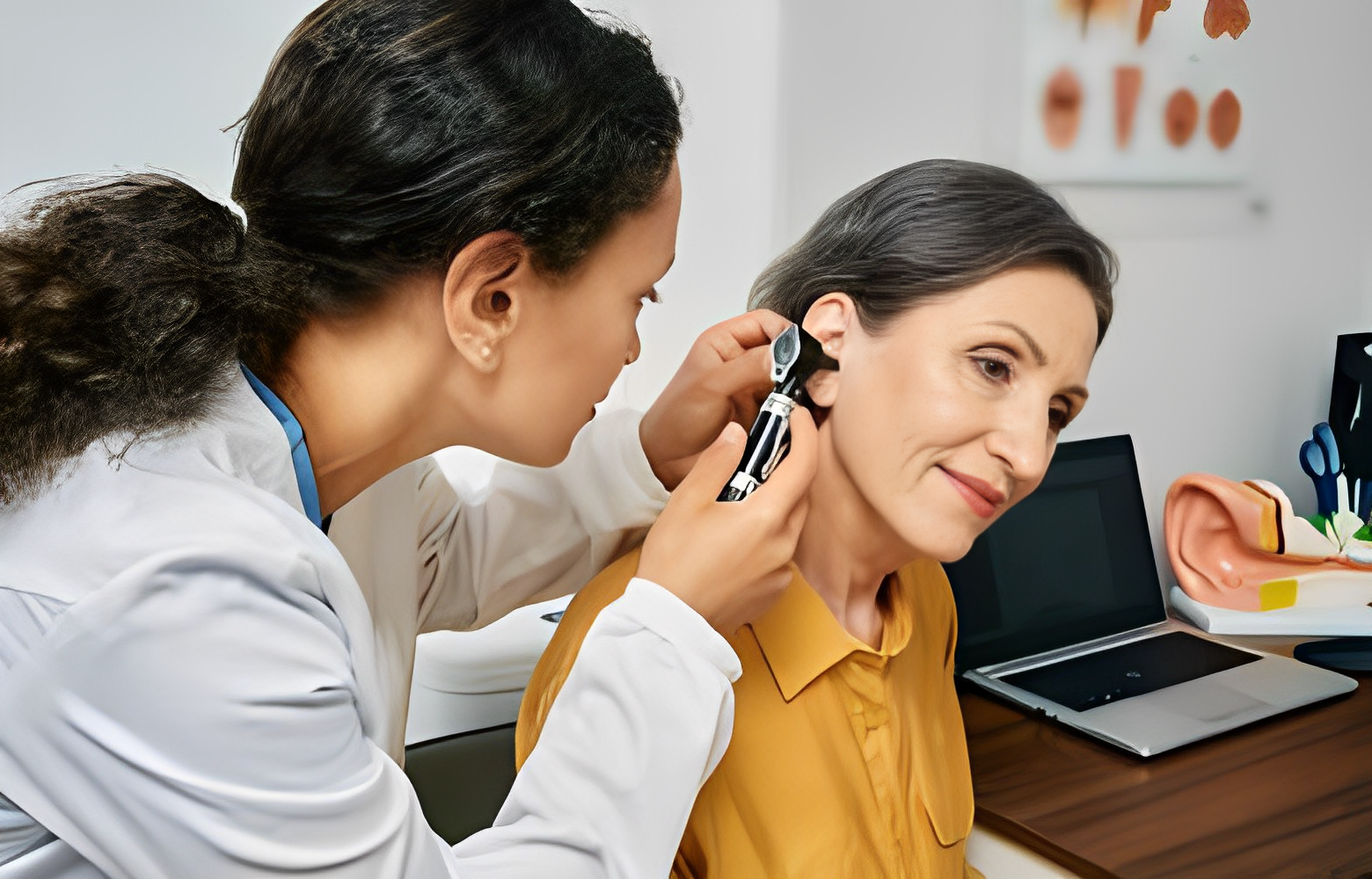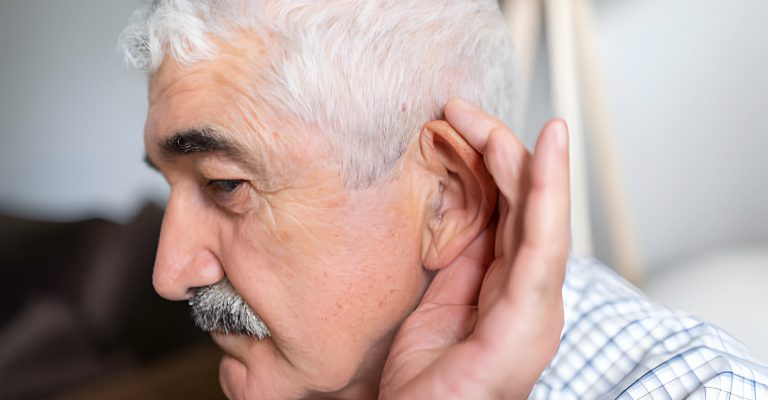There is a risk of losing hearing if the temporal or parietal lobes of the brain are damaged after a head injury, as problems with internal systems within the ear can lead to hearing loss. This post will discuss signs of a head injury’s complications, including hearing loss detection and treatment.
Causes and Types of Hearing Loss After Head Injury
Different areas of the ear or the brain may be affected differently, causing the ears to be damaged in various ways according to the trauma to the head.
Central Hearing Loss
Injuring the temporal lobe or other parts of the brain responsible for sound processing can cause hearing loss. This type is known as central hearing loss.
It may also appear as a result of injury to the infratemporal circuits related to the brainstem. Although pondered as a typical consequence of blows to the head area, hearing loss may also occur if a person sustains injury to the brain stem, which is responsible for the receiving and transmitting of messages, especially sound, to certain parts of the brain.
These channels are bilateral on the skull, and damage to one side of such auditory channels cannot happen easily after a head injury. In other words, the pathways may be present on either side of the midbrain. The severe injury would have to affect both parts of the auditory circuitry entirely, for it leads to a sign of any kind.
However, physicians rarely start looking for alternative causes of the patient’s hearing loss before having central hearing loss diagnosed as the consequence of a head injury. Secondly, radiation necrosis—a manifestation of radiation-induced brain damage—is more common after cancer therapy.
Sensorineural Hearing Loss

An example of sensorineural hearing loss after a head injury is one of the most widespread types of sensorineural hearing loss. One can be affected either by cochlea small sensory cells or nerve damage directly.
Peripheral hearing loss is usually not the cause of complete deafness but of a change in how sounds are heard. Individuals are likely to have trouble with sound clarity, and certain sound volumes become clear that wasn’t clear before.
This further means that people with sensorineural impairment develop an auditory phenomenon known as hyperacusis, in which even normal sounds seem unbearable because of the physical pain they generate.
Conductive Hearing Loss
Conductive hearing loss, the process that occurs when sound waves cannot reach the inner ear because of damage in the ossicular chain, is its usual consequence. Although this essential connector of the ear’s anatomy can be disrupted by either injury or pathology and block this natural flow of sound to the cochlea,
Otosclerosis can also cause conductive hearing deficit, though it is far less common than otosclerosis. It leads the middle ear bones to gradually harden, thus becoming unable to efficiently transfer sound vibrations to the inner ear.
Scientists speculate a response in the body following brain injuries may seemingly result in the bizarre development of bones, including inside the ear. The process is homonymous to heterotopic ossification. By occluding the ear canal causes a delay negative effect on the auditory pathway.
In case of head injuries close to the ear, real ear damage appears as a tear in the eardrum or tympanic membrane. This can lead to a condition known as hemotympanum, owing to blood pooling in the middle ear;,. Thus, the condition aggravates conductive hearing difficulties.
Auditory Verbal Agnosia
Auditory verbal agnosia is a cognitive disorder that originates in intricate language domains of the brain and is different from hearing deficiencies. Some experts refer to it as “pure word deafness” based on the inability to understand words despite normal hearing. In this selective breakdown from brain trauma, the areas of the brain that are involved in the interpretation of language are damaged.
Compared to aphasia, which affects several aspects of language, auditory verbal agnosia focuses on the auditory perception of language. It leaves most of the reading and writing skills relatively intact. While the hearing loss for other types of sound remains intact, users announce that word sounds are just random gibberish or nonsensical sounds.
Or it would be best to make it clear that processing language without hearing necessitates a careful approach, and the role of a Speech-Language Pathologist is essential in diagnosis and treatment. Speech-language pathologists are professionals skilled in manipulating the brain’s plasticity to retrain language pathways and recover communication skills.
Meniere's Syndrome
A condition known as hydrops is called Meniere’s syndrome. It occurs in the form of abnormal pressure in the sacs containing fluid in the inner ear. This unsteady pressure can cause hearing and balance problems, which arise from fluid movements disrupting the functions of the inner ear.
Although it is thought to be connected with the bleeding of the inner ear, the actual cause is unclear. However, Meniere’s syndrome does not have a clear cure. Still, patients can relieve the symptoms through steroids and prescribed medication.
Labyrinthine (Concussion)
Imagine a powerful blow that ruptures the fragile inner ear inner ear, and it’s not uncommon. Unfortunately, labyrinthine concussions are the one type that defy what we see on the surface of our bodies; no broken bones or bruising will tell you that this kind of hearing loss has occurred.
The damage to the tissue occurs even more dangerously in the inner ear near the inside eardrum because the force of rupture, not the undercourse, engraves on the body. This has the potential to completely disorganize your tonal hearing spectrum.
How do You Diagnose Hearing Loss after a Head Injury?

Diagnosing loss of hearing after a head injury is generally a complex and intricate treatment; it entails the patient’s medical history, physical examination, and an audiological specialist. Here’s a detailed step-by-step guide:
Medical History: The first stage involves the patient talking with a doctor to detail a head injury, its consequences, and the occurrence of hearing issues.
Physical Examination: The physiological exam will be completed, paying attention to the ears’ function and aiming to note any visible evidence of head injury.
Pure Tone Audiometry (PTA): PTA is an ordinary sound threshold test that assesses a person’s hearing degree. The test is performed in a soundproof room while listening to sounds representing different frequencies and levels.
Speech Audiometry: This test measures speech comprehension by evaluating the ear’s ability to differentiate sounds necessary in speech understanding at the normal hearing level.
Tympanometry: Tympanometry can help assess the condition of the middle ear and its movement. A probe is introduced in the ear canal.
Acoustic Reflex Testing: The various pathways of the acoustic characteristics, which usually comprise a contraction of the middle ear muscles in response to loud sound, can be a known source of the hearing deficit.
Auditory Brainstem Response (ABR): This test allows you to determine the functioning of the injured acoustic nerve and brainstem paths. Brain response is measured by placing electrodes on the scalp and when the patient hears clicks or tones.
Otoacoustic Emissions (OAEs): OAEs are sounds occurring in the inner ear that can be recorded with the help of a probe inserted within the ear canal to assess cochlear function.
Imaging Studies: There may be cases requiring CTs or MRI scans and spinal damage to the head or inner ear.
Further Specialty Referrals: Depending on the outcome of such tests, a referral to a neurologist or other specialists may be required to perform any further diagnostic tests and treatment.
Bottom Line
Many factors might lead to hearing loss, one possible effect of brain injury. It could start from mutilation of the auditory nerve or other areas of the brain that deal with sound information. Your provider could prescribe complementary approaches to treating deafness based on its etiology.

